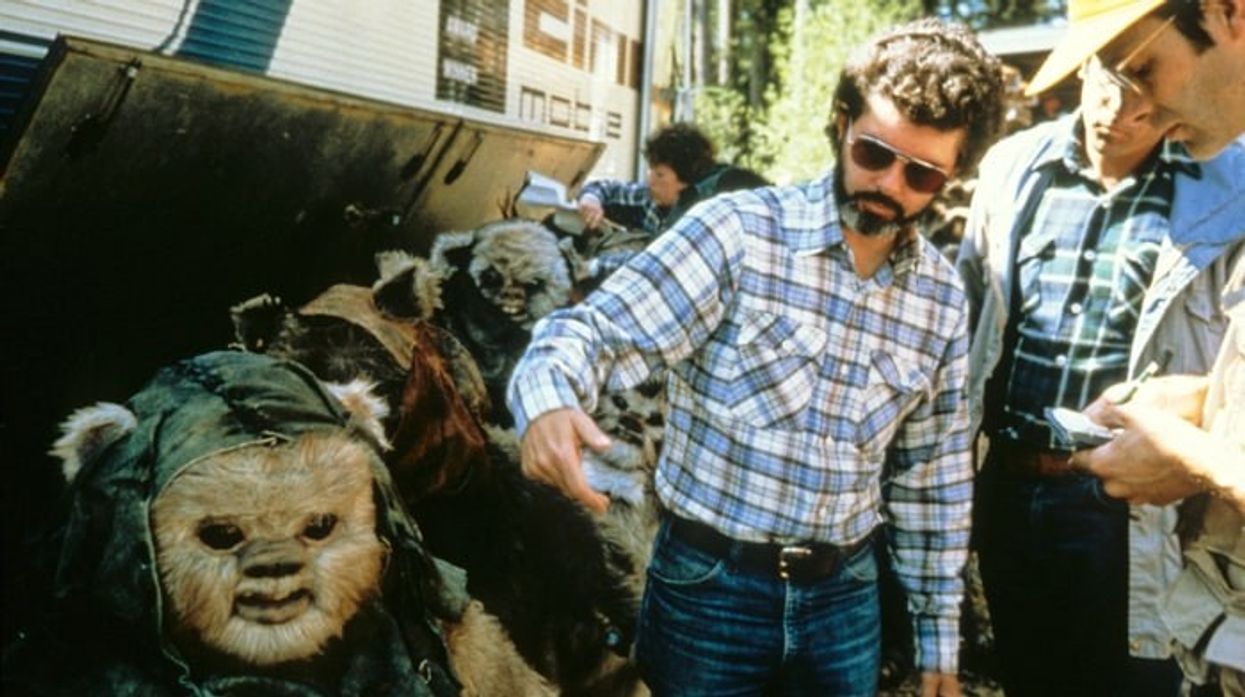Watch: 3 Ways to Create Worlds Using the Artistic Method of George Lucas
Lucas' films are steeped in a personal philosophy.

There are a host of filmmakers for whom the ability to imagine the simply unreal is central. Directors like Guillermo del Toro, Terry Gilliam, Michel Gondry, and others come to mind immediately—but you would also have to include George Lucas in this list. The worlds upon worlds he realized in the landmark Star Wars films have intrigued even the most jaded cineastes for decades. And yet, apart from the magic, what's also important to consider is the purpose: what is the filmmaker trying to do with all of this distended inventiveness? In Lucas' case, the answer is, as Alejandro Villareal points out in this moving new video essay, to teach us about the real world around us. He reached this point in stages, which could provide a series of steps for any filmmaker trying to develop a coherent vision.
1. Evaluate the world
When George Lucas did this, he found it a dark, bad place, full of people who were doing terrible things. This feeling led him to make his first major film, THX 1138, a morbid futuristic fantasy that pitted desperate individuals against a mechanized, homogenized society. As Lucas indicates, the film wasn't very successful. It didn't speak to his viewers, even if it spoke to his own feelings.
2. Evaluate your viewers
Filmmakers of any stripe should be aware of the effects that their films— which are ultimately extensions of their own world views—have on viewers. Following THX 1138, Lucas made American Graffiti, which, in addition to being a fairly smart film, is a fantasy. Lucas addresses real world issues, but he filters them through a scrim of romanticized visions of the 1950s, as if he couldn't stop himself. Rather than grim and shadowed, the place he lands is wide-eyed and realistic without being disturbing. The film is a lesson in response to constraints: how do you make a film which communicates new ideas but is also true to what you observe?
3. Evaluate the future
When Lucas made Star Wars, as becomes evident from the video essay, he had a lot more on his mind than light sabers. As he puts it, he wanted to use film to show the world the way it should be, rather than the way it is. And so the clashes we see in the film—between good and evil, between the ascetic lifestyle of the Jedi and the grand, ostentatious displays of the Empire, between the invisible pervasiveness of the Force and the very real, very present explosiveness of ballistic warfare—are obvious metaphors that represent dialogues which were taking place in Lucas's head, writ large and in blinding, vast color. If you can take whatever issues or concern nag at you and transform them into a more tectonic form, then what you're doing is creating an artwork—whether it be a piece of music, a piece of writing, or a film.
Which directors are your favorite examples of those who also reach towards fantasy to communicate larger themes? Discuss in the comments.
Source: https://vimeo.com/235286790











